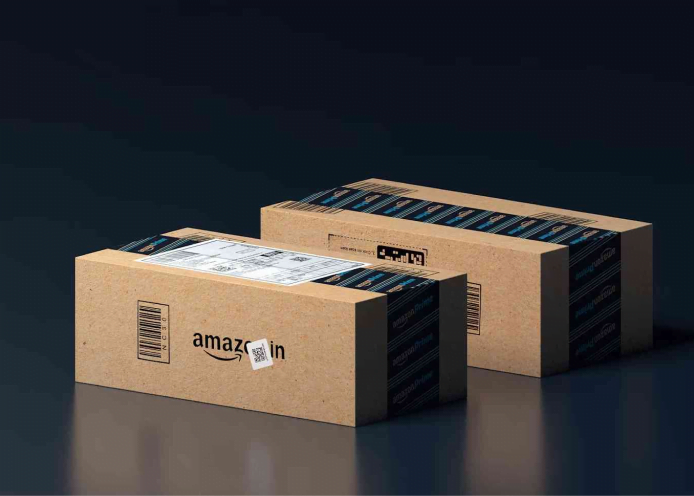Amazon Prime Day 2024: Unpacking a $14.2 Billion Shopping Spree
Hello, and welcome to the bustling world of online shopping and beyond. This article, inspired by our latest podcast episode of The Checkout Point, is brought to you by the folks at Blikket.co. I’m your guide, Max, ready to unravel the complexities behind one of the most significant events in eCommerce this year—Amazon Prime Day 2024.
In a stunning display of consumer spending, Amazon Prime Day 2024 shattered records with an eye-watering $14.2 billion worth of transactions in just 24 hours. While these figures are impressive, they only begin to scratch the surface of the underlying strategies and implications of this record-setting day for retailers and consumers alike.
Join us as we delve deeper into what made this year’s Amazon Prime Day unprecedented. We’ll explore the strategies that made it a golden day for Amazon and what these trends signify for the future of digital shopping. From psychological pricing techniques to exclusive launches and lightning deals, we uncover the mechanics behind the madness.

Exploring Broader eCommerce Dynamics
But there’s more to the story. Our journey doesn’t stop at Amazon. We will also dive into the evolving landscape of e-commerce platforms. How are competitive players in the market like Mercari, Depop, and Levi’s innovating to reshape the online shopping experience? Each of these platforms is making bold moves—from Mercari’s heightened focus on the U.S. market to Depop’s groundbreaking fee restructuring and Levi’s push towards enhancing user experience on their site.
As we analyze these trends, we’ll also touch on some crises and innovations, like the surprising hiccup in CrowdStrike’s software update and the integration of AI in day-to-day retail operations. What can these situations tell us about the future of tech in retail?
And not to be overlooked, the strategic battles within the retail sector continue. We’ll look at everything from underground retail crimes to Walmart’s strategies to dominate the back-to-school market.
Stay with us as we unpack these fascinating developments and more, and don’t forget to tune into The Checkout Point podcast for a deeper dive into these stories. Here’s to discovering what the ever-evolving world of eCommerce has in store!
The Secrets Behind Amazon Prime Day’s $14.2 Billion Triumph
Amazon Prime Day 2024 has officially set the bar for global online shopping extravaganzas, racking up a jaw-dropping $14.2 billion in U.S. online sales. What sets this event apart isn’t just the staggering sum of transactions; it’s the meticulously crafted strategy that turns it into an annual retail juggernaut.

Decoding the Strategy Behind the Success
The allure of Amazon Prime Day goes beyond fleeting markdowns; it crafts an entire narrative that consumers are eager to participate in. Right from tapping the magic of anticipation to harnessing the power of exclusivity, Amazon turns shopping into an event that’s awaited with bated breath. The buildup to the day isn’t merely hype—it’s a calculated play to make sure when the day comes, it breaks more than just sales records.
Mystery, Magic, and the Art of Secrecy
Another ingredient in Amazon’s winning recipe is the secretive nature of the deals. The uncertain aspect of what might be on offer plays into the consumer’s thrill for hunting deals. By not revealing all the details upfront, Amazon ensures that the shoppers are continuously engaged, checking back frequently to scout new deals, which significantly boosts the duration and depth of user engagement.
Exclusivity Adds to the Charm
Restricting Prime Day to only Amazon Prime members embeds a sense of exclusivity and elevates its desirability. As discussed in insights from retail analysts, this exclusivity creates a psychological ‘club effect’ making non-members feel left out and more inclined to subscribe, turning them into potential long-term customers.
Data-Driven Brilliance
The unrelenting surge in Prime Day’s success every year can largely be attributed to Amazon’s keen focus on using historic data to optimize and personalize the deals offered. By analyzing trends from past Prime Days, they manage to keep the offers fresh, substantial, and directly in line with what the consumer is looking to spend at that moment.
In summary, Amazon Prime Day 2024 wasn’t just a shopping event; it was a multi-faceted campaign designed to entertain, engage, and retain a global audience. The staggering $14.2 billion figure is proof that when commerce meets carefully crafted experience, consumers are not merely purchasers but enthusiastic participants in the retail narrative. With every transaction during this event as observed by industry experts, consumers cast a vote indicating that Prime Day is much more than a sale—it’s a phenomenon they wish to be a part of, year after year.
Adapting to Change: How Key Players Reshape eCommerce
As we navigate through the fluid landscape of eCommerce, changes are afoot that are reshaping how we buy and sell online. Let’s dissect some of the most intriguing transformations presently occurring in the online marketplace, focusing on three major players: Mercari, Depop, and Levi’s.

Mercari’s Commitment to the U.S. Market
In recent news that stirred the eCommerce community, there were rumors about Mercari potentially withdrawing from the U.S. market. Concern turned to relief as Mercari announced their decision to stay, reinforcing their commitment to the lucrative American market. This development not only boosts confidence among current platform users but also signals the strategic importance of the U.S. market in global eCommerce dynamics. Understandably, this move by Mercari is a clear indicator of the stability needed in the competitive eCommerce environment, which is crucial for the multitude of smaller sellers depending on these platforms to reach a wider audience.
Depop’s Bold Pricing Strategy
Next, we see a disruptive shift in pricing strategies with Etsy’s Depop altering its fee structure, moving most fees from sellers to buyers. The announcement, confirmed by Etsy’s Depop Shifts Most Fees from Sellers to Buyers, reveals a strategic pivot that might redefine user interaction on the platform. By offloading the fee burden from sellers to buyers, Depop is potentially opening its doors to a broader array of creatives and vendors while posing new questions about consumer reaction to increased costs. Will this lead to a decrease in impulse buying, or will the unique offerings on Depop keep consumers engaged? This move is a tactical play in navigating the delicate balance between profitability and maintaining a vibrant user base.
Levi’s Emphasis on User Experience
Levi’s, a name synonymous with denim, is taking significant strides to enhance its eCommerce platform, thereby enriching the customer’s shopping experience. As detailed in Levi’s overhauls e-commerce site to make it more customer-friendly, the renowned denim brand is overhauling its site with a focus on ease of navigation, aesthetic improvements, and personalization. This strategy isn’t just about selling products; it’s about crafting an experience that resonates with the comfort and style synonymous with Levi’s jeans. Such enhancements are integral to thriving in the digital age, where consumer expectations are as high as their desire for quality and convenience.
These examples from Mercari, Depop, and Levi’s illustrate a broader narrative in the eCommerce sector: the necessity of adaptation. Whether it’s adjusting market strategies, rethinking pricing models, or redefining the user experience, these shifts are pivotal in setting new standards in the eCommerce landscape. They influence consumer behavior and pave the way for future innovations in how products are marketed and sold online.
Especially with events like Amazon Prime Day 2024 on the horizon, staying attuned to these changes is more crucial than ever for both consumers and industry players. The eCommerce world is fast-evolving, and keeping up with these adjustments ensures that whether you’re a buyer, a seller, or an observer, you’re part of a larger, continually adapting narrative.
So, keep your eyes peeled and your minds open, as the dynamic world of eCommerce continues to evolve, bringing new challenges and opportunities at every turn.
The Shockwaves of CrowdStrike: Unpacking the Impact of a Global Tech Outage
When CrowdStrike, a frontrunner in cybersecurity, inadvertently orchestrated a massive global IT outage via a software update, it demonstrated just how delicate our digital ecosystem can be. This incident, as startling as it was, offers a crucial study in vulnerability, trust, and the cascading repercussions on global markets and trust in technology providers.

From Update to Uproar: The Chain Reaction
The ripple effect started with what was expected to be a routine update from CrowdStrike. Instead of routine, however, the update spiraled into an IT catastrophe—dubbed the ‘patchpocalypse’—paralyzing the digital workings of countless businesses, from small enterprises to large conglomerates. The unintended disruption oscillated through the operational backbone of these companies, halting transactions, freezing communication lines, and turning robust digital fortresses into virtual ghost towns overnight.
Economic Impact and IT Nightmare
The immediate fallout was economic—a halt in productivity, missed opportunities, and financial losses. Behind the scenes, IT administrators faced fears of a weeks-long recovery process, as highlighted in a report by The Register. The prolonged downtime not only meant direct financial hemorrhage but also indirect costs associated with overtime and potentially hiring external experts to mitigate the mess.
The Trust Crisis
Beyond the immediate technical and economic impacts lies a deeper, perhaps more enduring consequence: a crisis of trust. With companies increasingly dependent on digital defenses, the irony of a cybersecurity firm instigating such an outage is not lost on clients nor investors, as seen in the sharp decline in CrowdStrike shares. This event starkly highlights the risks involved when businesses outsource their cybersecurity, placing immense trust in these digital guardians.
Communication amidst Chaos
However efficient a company’s contingency planning might be, communication during a crisis remains critical. The tech blackout underscored the need for robust disaster response strategies, particularly how companies communicate with their clients when systems fall silent. Absence of clear communication can erode customer trust just as severely as the technical failure itself.
Broader Implications on Tech Industry
Meanwhile, the reverberations of the CrowdStrike incident influenced other tech sectors as well. Almost parallel to this debacle, Microsoft tweaked the prices for its Game Pass service, prompting a regulatory review by the FTC concerned about consumer rights and competitive practices, as discussed in a piece from The Register.
Final Thoughts
This episode serves as a stark reminder of our dependency on technology and the domino effect one glitch can set off across the global digital landscape. It begs the question of how companies can shield themselves against similar disruptions and what ethical obligations technology developers hold to avoid such crises. For every eCommerce company leveraging technologies like Amazon Prime Day 2024, assessing these vulnerabilities and crafting thoughtful, comprehensive responses is not just strategic—it’s essential for survival in a digital-first marketplace.
AI and eCommerce: Revolutionizing How We Shop and Dine
Welcome to today’s exploration into a truly transformative era for retail—where Artificial Intelligence (AI) reshapes our everyday shopping and dining experiences. Far from being just hype, AI is solidifying its role as an essential pillar in the modern commerce landscape. Let’s delve into how this technology is changing our approach to something as routine as grocery shopping or dining out.

The AI-Enabled Grocery Store: A Peek into the Future
Imagine entering a grocery store where your presence triggers a network of cameras and sensors. These technologies recognize you, direct you to your favorite products, offer personalized discounts, and even let you skip the checkout queue outright. It might sound futuristic, yet it’s fast becoming a reality. According to CNBC’s recent coverage, AI and automation are streamlining operations from inventory management to customer interaction in both grocery stores and fast-food chains, ensuring fresher products and faster service, thereby elevating customer experience significantly.
Uncomplicating Payments with AI
When it comes to payments, traditional processing is often slow and error-prone. AI steps in as a powerful solution, simplifying and securing transactions. By leveraging advanced algorithms, AI can quickly identify discrepancies, detect fraud, and minimize errors. This not only accelerates the transaction process but also enhances security for both merchants and consumers. For a deeper dive into how AI is transforming payment systems, check out this insightful article from Practical Ecommerce.
The Adaptive Commerce: AI’s Role in Dynamic Pricing and Recommendations
Reinforcement learning, a subset of AI, is like a reward system for algorithms—similar to how humans learn from consequences. In retail, this means AI can modify recommendations and adjust pricing in real-time, based on what strategies lead to higher sales and satisfied customers. More than just theory, these applications are actively being implemented across the eCommerce industry. This report provides a thorough examination of how reinforcement learning is fine-tuning customer interactions.
Albertsons: Integrating AI to Enhance Shopping
The retail giant Albertsons is taking AI integration a step further. They’re employing AI not just online but within their physical outlets. Shoppers can experience digital displays that shift promotions based on live data or use apps that streamline their in-store navigation. For more on how Albertsons is blending digital and physical retail strategies through AI, see Grocery Dive’s detailed article.
Through these advances, AI in eCommerce is not only reshaping business models but also refining our daily interactions with retailers. Each visit—whether virtual or physical—is becoming more personalized, efficient, and tailored to individual preferences and requirements.
So, next time you tap through an app to order a meal or navigate your local grocery store, consider the “invisible AI hands” at play, optimizing your experience from the shadows. From anticipating your needs to enhancing transaction security, AI is indeed making shopping not just easier but also more enjoyable. As we continue to move forward, AI’s integration into our shopping experiences is destined only to deepen, promising more innovation and convenience.
Unpacking the Legal and Competitive Battles in Retail
As we stride through the corridors of the retail industry, it’s evident that this isn’t just about transactions; it’s a battleground of strategy, legal skirmishes, and consumer dynamics. Each player, from giants like Walmart to specialty stores like Kohl’s, crafts its approach to seize a piece of the market pie, while also navigating the tumultuous waters of legal challenges and competition. Let’s dissect some of these pivotal moments shaping the retail landscape.

Walmart’s Dominance During Back-to-School Season
Walmart’s success in the retail sector, particularly during the back-to-school period, offers a fascinating glimpse into effective market strategies. By leveraging aggressive pricing and a diverse product assortment, Walmart not only meets consumer needs but also sets a high competitive benchmark. This retail behemoth’s strategy impacts not only market trends but forces others in the sector to either step up their game or stagger behind. For more insights, check out this analysis on CNBC detailing Walmart’s current market advantage.
Intellectual Property Wars: Skechers vs. L.L. Bean
In a recent and heated legal battle, Skechers has taken L.L. Bean to court over allegations of patent infringement. This lawsuit underscores the crucial role of intellectual property in the retail industry—a commodity as valuable as the physical products sold. These legal confrontations not only affect the companies involved but also set precedents for innovation and competition across the industry. Delve deeper into the case with Retail Dive’s coverage of the ongoing lawsuit.
Kohl’s Adaptive Strategies in Fashion Retail
Responding adeptly to consumer preferences, Kohl’s has expanded its offerings to include dedicated dress shops across 700 of its stores. This strategic move is not just about selling dresses; it’s about enhancing the shopping experience and responding to shifting fashion trends. By creating specialized zones, Kohl’s aims to provide a tailored shopping experience that resonates with today’s consumers. For more on Kohl’s strategic expansions, take a look at Retail Dive’s article.
From Walmart’s strategic price positioning to the intellectual property disputes exemplified by Skechers and L.L. Bean, and Kohl’s market adaptation, the retail sector presents a complex tapestry of challenges and strategies. As we anticipate Amazon Prime Day 2024, these lessons and strategies provide crucial insights into what might influence the next big sale phenomenon.
The ever-evolving retail market demands constant vigilance and adaptation from those within it. Every legal battle fought, strategy employed, and market captured paints a broader picture of what it is to not just survive but thrive in this competitive arena. How these developments influence consumer choice and market dynamics during events like Amazon Prime Day 2024 remains a key area of interest for industry watchers and participants alike.
Wrapping Up a Stellar Week in eCommerce
As we conclude another enriching week in the dynamic world of eCommerce, it’s clear that the landscape is continually transforming, compelling eCommerce managers, marketers, and owners to stay agile and informed. From the astounding figures of Amazon Prime Day 2024 to groundbreaking advancements in AI and retail strategy, this week has been a testament to the rapid evolution and opportunities within the sector.
Reflecting on Amazon Prime Day 2024

With Amazon Prime Day 2024 shattering records by accumulating a whopping $14.2 billion in sales, it’s evident that this event has become much more than just a sale—it’s a phenomenon that significantly shapes the market. This begs a few questions: How can businesses of all sizes leverage such events better? What strategies did the top-performing brands employ that others might have missed?
Advancements and Innovations: What’s Next?
As we’ve seen with the recent surge in technology-driven solutions like AI in grocery shopping and strategic shifts by industry leaders such as Walmart, it’s obvious that embracing technology is no longer optional but a necessity. What innovative techniques are you considering to integrate into your business model? How will these changes enhance your customer engagement and operational efficiency?
Engage and Share Your Insights
As we gear up for what promises to be an exhilarating upcoming week, I encourage you to reflect on these developments and consider their implications for your own business strategies. What lessons have you learned from this week’s roundup that could be game changers in your approach?
How are you preparing for major eCommerce events like Amazon Prime Day 2025, and what tools or data do you find most valuable in predicting consumer trends? Dive into the comment section below to share your thoughts, experiences, and strategies. Let’s learn from each other and navigate the future of eCommerce together.
Stay tuned for more updates, and remember, a well-informed strategy is your best tool in the ever-evolving eCommerce landscape. See you in the comments!










